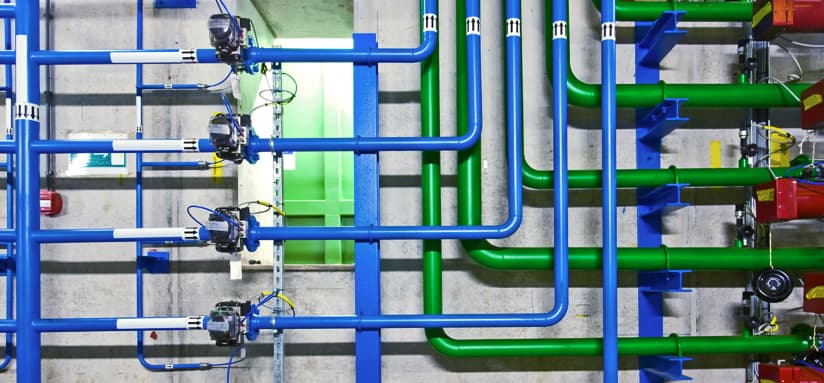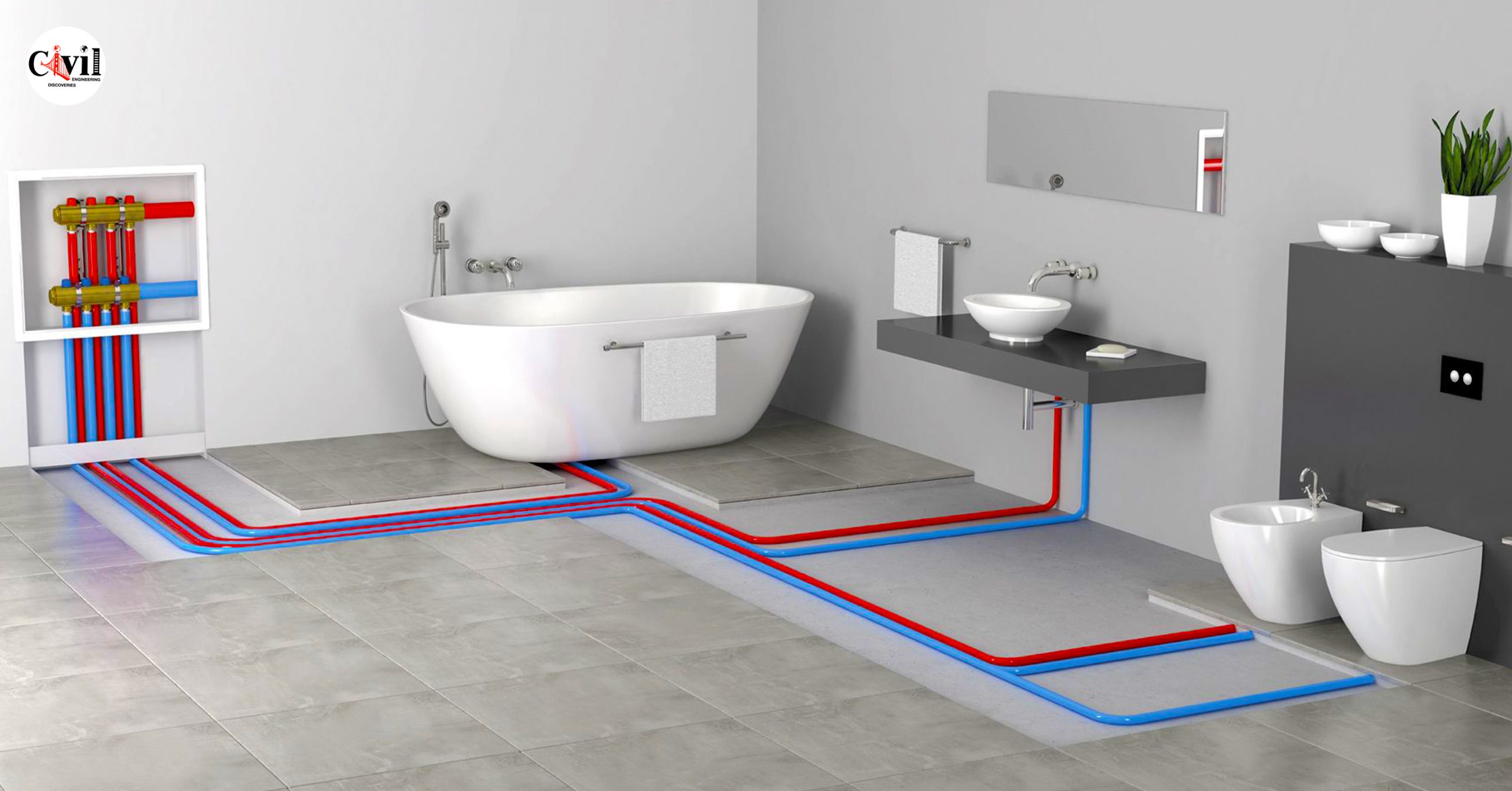This article in the next paragraphs on the subject of The Inner Workings of Your Home's Plumbing is exceptionally entertaining. Don't miss it.

Recognizing exactly how your home's pipes system works is crucial for every property owner. From supplying clean water for drinking, food preparation, and bathing to securely removing wastewater, a well-kept plumbing system is important for your household's health and wellness and comfort. In this thorough guide, we'll discover the intricate network that makes up your home's plumbing and offer ideas on upkeep, upgrades, and handling common problems.
Intro
Your home's plumbing system is greater than just a network of pipelines; it's a complex system that guarantees you have access to tidy water and efficient wastewater removal. Recognizing its components and how they interact can help you stop pricey repair work and guarantee every little thing runs efficiently.
Standard Components of a Plumbing System
Pipelines and Tubing
At the heart of your plumbing system are the pipes and tubes that bring water throughout your home. These can be constructed from numerous products such as copper, PVC, or PEX, each with its benefits in regards to sturdiness and cost-effectiveness.
Fixtures: Sinks, Toilets, Showers, and so on.
Components like sinks, toilets, showers, and tubs are where water is used in your home. Recognizing just how these components connect to the plumbing system assists in detecting troubles and planning upgrades.
Shutoffs and Shut-off Points
Valves regulate the flow of water in your pipes system. Shut-off shutoffs are crucial during emergency situations or when you need to make repair work, permitting you to separate parts of the system without interfering with water circulation to the whole home.
Water System System
Main Water Line
The primary water line connects your home to the local water system or a private well. It's where water enters your home and is dispersed to numerous components.
Water Meter and Stress Regulator
The water meter measures your water usage, while a pressure regulator guarantees that water streams at a risk-free pressure throughout your home's pipes system, preventing damage to pipelines and fixtures.
Cold Water vs. Hot Water Lines
Understanding the distinction between cold water lines, which supply water straight from the major, and warm water lines, which lug warmed water from the hot water heater, aids in repairing and preparing for upgrades.
Drain System
Drain Pipes Water Lines and Traps
Drain pipes lug wastewater away from sinks, showers, and toilets to the drain or septic system. Catches stop drain gases from entering your home and additionally trap particles that might create blockages.
Air flow Pipes
Ventilation pipelines permit air right into the drain system, avoiding suction that could reduce drain and cause traps to empty. Appropriate ventilation is necessary for preserving the honesty of your plumbing system.
Value of Proper Water Drainage
Ensuring proper water drainage avoids back-ups and water damage. Consistently cleaning drains pipes and maintaining catches can protect against costly repair work and prolong the life of your plumbing system.
Water Heating Unit
Sorts Of Water Heaters
Hot water heater can be tankless or conventional tank-style. Tankless heating units warm water as needed, while tanks save heated water for instant usage.
How Water Heaters Attach to the Plumbing System
Understanding exactly how water heaters link to both the cold water supply and hot water circulation lines aids in diagnosing issues like inadequate hot water or leakages.
Maintenance Tips for Water Heaters
Consistently purging your water heater to eliminate sediment, inspecting the temperature level settings, and inspecting for leakages can expand its lifespan and boost energy performance.
Typical Plumbing Problems
Leaks and Their Reasons
Leakages can occur because of maturing pipes, loosened fittings, or high water stress. Addressing leakages promptly prevents water damage and mold growth.
Blockages and Clogs
Clogs in drains and bathrooms are often caused by flushing non-flushable products or a buildup of grease and hair. Making use of drain screens and bearing in mind what goes down your drains can stop blockages.
Indications of Pipes Problems to Look For
Low tide pressure, sluggish drains pipes, foul odors, or abnormally high water costs are signs of prospective pipes troubles that need to be dealt with immediately.
Pipes Maintenance Tips
Regular Evaluations and Checks
Arrange yearly plumbing inspections to catch problems early. Seek signs of leakages, corrosion, or mineral buildup in faucets and showerheads.
DIY Upkeep Tasks
Straightforward tasks like cleaning tap aerators, checking for bathroom leaks utilizing dye tablets, or protecting subjected pipes in chilly environments can protect against significant pipes concerns.
When to Call an Expert Plumber
Know when a pipes concern needs expert experience. Trying complicated repair services without appropriate expertise can bring about even more damages and higher repair work expenses.
Upgrading Your Plumbing System
Factors for Updating
Updating to water-efficient components or replacing old pipes can improve water quality, reduce water bills, and increase the value of your home.
Modern Pipes Technologies and Their Advantages
Discover modern technologies like clever leakage detectors, water-saving toilets, and energy-efficient water heaters that can save money and reduce ecological effect.
Expense Considerations and ROI
Calculate the upfront costs versus long-term savings when taking into consideration pipes upgrades. Numerous upgrades spend for themselves with decreased energy costs and less repair work.
Environmental Effect and Conservation
Water-Saving Components and Devices
Setting up low-flow faucets, showerheads, and toilets can significantly minimize water usage without sacrificing efficiency.
Tips for Lowering Water Use
Simple behaviors like taking care of leaks without delay, taking much shorter showers, and running complete tons of laundry and recipes can save water and lower your energy expenses.
Eco-Friendly Pipes Options
Think about sustainable pipes materials like bamboo for floor covering, which is durable and environment-friendly, or recycled glass for counter tops.
Emergency Readiness
Steps to Take During a Pipes Emergency
Know where your shut-off shutoffs are located and just how to shut off the water supply in case of a ruptured pipe or major leak.
Relevance of Having Emergency Contacts Handy
Keep contact details for regional plumbing professionals or emergency solutions readily offered for quick response throughout a pipes crisis.
Do It Yourself Emergency Fixes (When Appropriate).
Short-lived fixes like utilizing air duct tape to patch a dripping pipeline or positioning a bucket under a leaking tap can minimize damage up until an expert plumbing professional arrives.
Final thought.
Recognizing the anatomy of your home's plumbing system equips you to keep it properly, saving time and money on repair services. By following routine maintenance regimens and remaining educated concerning modern-day plumbing technologies, you can ensure your plumbing system operates effectively for years to find.
HOW YOUR PLUMBING SYSTEM WORKS
Which Pipes Do What?
Blue lines = fresh water supply entering the building
Red lines = hot water supply entering the building
Grey lines = pipes carrying waste away from the building and venting pipes carrying gases away from the building (through the roof)
YOUR MAIN PLUMBING SYSTEMS
There are two main plumbing systems that support your home s basic plumbing needs one that brings clean water into your home, and one that sends dirty water away from your home. Connected to the toilet, bath, shower, and other faucets in your home, these two systems keep your water flowing in the right directions.
ACCESSING FRESH WATER
Fresh and clean water is brought into your home through the main water supply line . Filtered through one pipe, this water is pressured to flow into the various fixtures in your home at any given time.
This water can be sourced from a well located on your property, a pond or river (mostly cottages), or, as in most cases, from the city s municipal water treatment centre. However, it is important to note that water that is untreated, such as the water siphoned from ponds or rivers, may not be safe to drink. Personal water supplies always need to be treated for hardness and contaminants before consumed.
MUNICIPAL WATER SUPPLIES
Improve taste and odour
Remove sediment
Eliminate hardness
Reduce chlorine
COLD WATER SUPPLY VS. HOT WATER SUPPLY
Cold water flows into your home or building through the service line, which then distributes hot or cold water to your fixtures. This line is most commonly run through a central column that runs floor to floor. Hot water runs in short and straight pipes as the longer the pipeline, the more heat that will be lost in the transfer. Having shorter pipes also allows residents to access hot water more quickly.
WASTE WATER SYSTEM
Your wastewater system is divided into two parts pipes that send wastewater away from your home and venting pipes that send sewer gas away from your home. Sewage water travels through pipes that flush the water and waste towards local sewers that are operated and managed by your city or town. Most sewer systems rely on gravity to move the wastewater to where it needs to go.
The further away from your toilet or sink, the larger wastewater pipes become. This allows for waste to be disposed of from various parts of your home or business at once without pipe blockages. The angle and flow of these pipes are also essential for keeping your waste pipes clear of build up.
https://harrisplumbing.ca/how-your-home-plumbing-system-works/

HOW YOUR PLUMBING SYSTEM WORKS
Which Pipes Do What?
YOUR MAIN PLUMBING SYSTEMS
There are two main plumbing systems that support your home s basic plumbing needs one that brings clean water into your home, and one that sends dirty water away from your home. Connected to the toilet, bath, shower, and other faucets in your home, these two systems keep your water flowing in the right directions.
ACCESSING FRESH WATER
Fresh and clean water is brought into your home through the main water supply line . Filtered through one pipe, this water is pressured to flow into the various fixtures in your home at any given time.
This water can be sourced from a well located on your property, a pond or river (mostly cottages), or, as in most cases, from the city s municipal water treatment centre. However, it is important to note that water that is untreated, such as the water siphoned from ponds or rivers, may not be safe to drink. Personal water supplies always need to be treated for hardness and contaminants before consumed.
MUNICIPAL WATER SUPPLIES
COLD WATER SUPPLY VS. HOT WATER SUPPLY
Cold water flows into your home or building through the service line, which then distributes hot or cold water to your fixtures. This line is most commonly run through a central column that runs floor to floor. Hot water runs in short and straight pipes as the longer the pipeline, the more heat that will be lost in the transfer. Having shorter pipes also allows residents to access hot water more quickly.
WASTE WATER SYSTEM
Your wastewater system is divided into two parts pipes that send wastewater away from your home and venting pipes that send sewer gas away from your home. Sewage water travels through pipes that flush the water and waste towards local sewers that are operated and managed by your city or town. Most sewer systems rely on gravity to move the wastewater to where it needs to go.
The further away from your toilet or sink, the larger wastewater pipes become. This allows for waste to be disposed of from various parts of your home or business at once without pipe blockages. The angle and flow of these pipes are also essential for keeping your waste pipes clear of build up.
https://harrisplumbing.ca/how-your-home-plumbing-system-works/
I'm certainly very excited about The Inner Workings of Your Home's Plumbing and I am assuming you appreciated our blog posting. Are you aware of anybody else who is serious about the subject? Why not promote it. Thanks for taking the time to read it.
Click Here